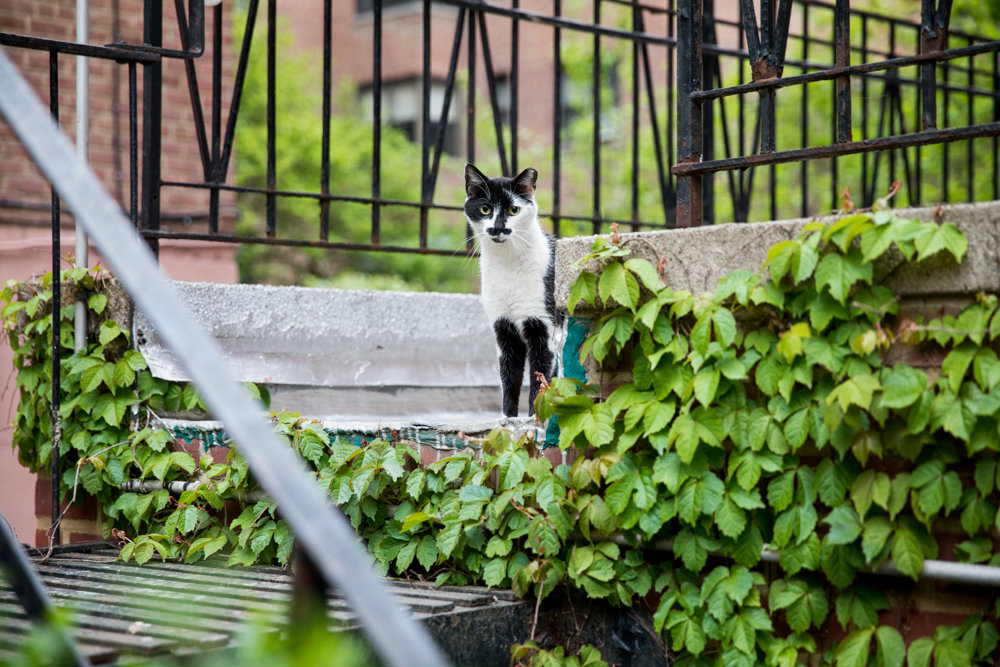Dinowitz pushes governor to stop declawing cats
New York is poised to become the first state to ban cat declawing — a practice long described by animal advocates as unnecessary and cruel.
The bill, authored by Manhattan Assemblywoman Linda Rosenthal and cosponsored by colleague Jeffrey Dinowitz, awaits the governor’s signature.
“I’ve never had a cat, I don’t have a cat, and I never will have a cat,” Dinowitz said. “But I think that declawing is horrible and barbaric.”
Declawing — a procedure officially known as an onychectomy — involves removing the last joint in a cat’s toe. The surgery poses the risk of death from anesthesia and excessive bleeding, according to the American Society for the Prevention of Cruelty to Animals. If done correctly, the bone that includes the nail bed is removed, and the claw never grows back. A botched procedure, however, can cause pain lasting from several days to the rest of the cat’s life.
Some declawed cats develop behavior problems like biting or litter box avoidance, according to PetMD.com. Claws are a cat’s primary way of defending itself, so if a declawed indoor cat gets outside, it’s easy prey for larger predators.
Rosenthal’s bill prohibits declawing unless it’s necessary for the cat’s health, like addressing illness, infection or disease. Any veterinarian caught performing the procedure for “cosmetic or aesthetic reasons, or reasons of convenience in keeping or handling the cat” could be hit with a $1,000 fine.
“If somebody has a cat and is afraid of getting their furniture scratched, well you shouldn’t have a cat then,” Dinowitz said. “Cats are cats. They scratch. It’s natural. I think declawing is cruel and it’s not necessary.”
Many people agree. The procedure is banned in many European countries and several cities in the United States. Major animal rights organizations denounce the procedure as unnecessary and cruel in almost every circumstance.
But there are critics.
“Legislation to make declawing illegal, while well-intentioned, can be problematic,” according to the ASPCA. That’s because, in rare cases, declawing may be justifiable as a last resort to prevent euthanasia if a cat must be relocated to a new home because of the owner’s health.
“There is also no meaningful way to enforce a law that includes this exception,” the animal rights organization added.
It’s risky for people with medical conditions like hemophilia and diabetes to own a cat because their blood may not clot normally, or they may be more susceptible to infections. Declawing their felines helps prevent what could be health-threatening injuries. Yet, the ASPCA believes the potential for those people to be exposed to diseases from cat scratches is not a justification for declawing. The Centers for Disease Control and Prevention recommends hygiene and alternative pet selections for those with medical conditions.
The New York State Veterinary Medical Society was against the bill, arguing that declawing is a decision made between a cat owner and their veterinarian. The society argued the number of declawing procedures performed has decreased over the years because vets are properly educating cat owners about the procedure and viable alternatives.
The vet group cited studies showing that just 1 percent of all declawed cats experienced chronic pain, and most didn’t exhibit behavioral problems.
In fact, the vets say it’s human physicians recommending cat owners get their pet declawed for the safety of their owner or their family. Vets believe that leaving it to doctors, and ultimately veterinarians, is a more effective way to limit declawing — not a wide-reaching law that doesn’t take individual situations into account.
Dinowitz said he’s not surprised that a group representing the state’s veterinarians oppose the bill. He disagreed with declawing exceptions for owners with medical conditions.
“If you have a medical condition that would adversely affect you if you were to be scratched by a cat, you probably shouldn’t have a cat,” Dinowitz said. “Get a dog or something.”
Many owners got their cats when they were healthy, but face giving up the animal when their health changes. Some assisted living facilities allow their residents to bring animals, but require the cat be declawed to protect other residents.
In these cases, people would have to give up their pets, according to the veterinary society. Some cats, especially those that are older or have behavioral problems, may never be adopted and ultimately be euthanized.
“I’m honestly not sure how many people would fall into that category,” Dinowitz said. “Probably a very small number. But if you have a situation like that because of a medical condition or whatever, you really shouldn’t have a cat.”















